Medium Crape Myrtle Shrubs & Trees (5-20' tall)
Sorts and Filters
Collection Results

Colorama™ Scarlet Crape Myrtle Tree
30 reviewsStarting at $129.95Up to 12% OFF
Tonto Crape Myrtle Tree
117 reviewsStarting at $119.95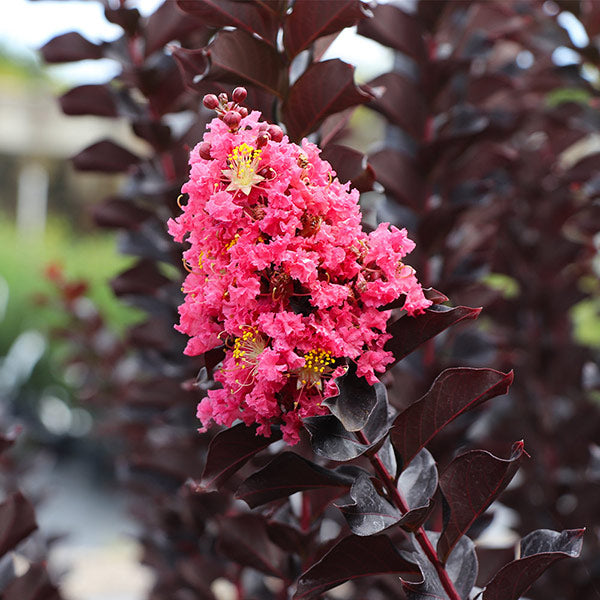
Thunderstruck™ Coral Boom™ Crape Myrtle Tree
17 reviewsStarting at $81.95Up to 41% OFF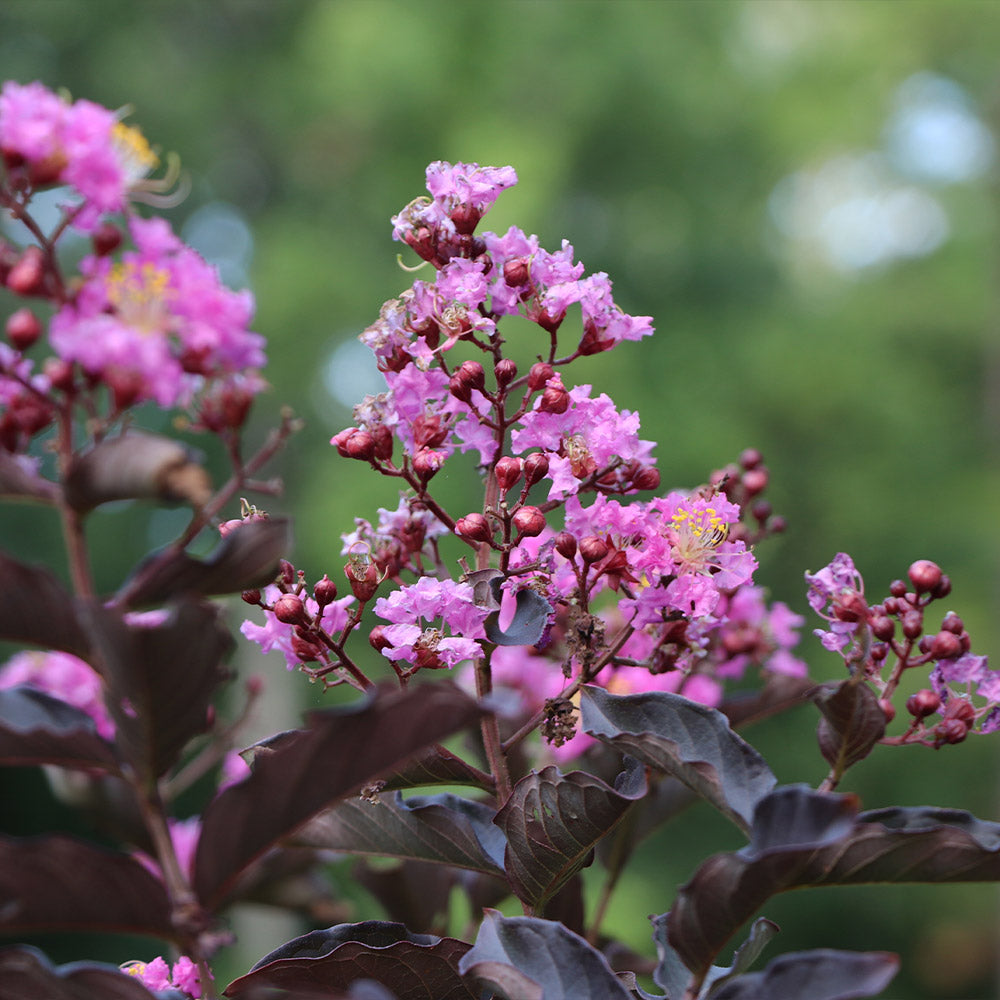
Thunderstruck™ Lavender Blast™ Crape Myrtle Tree
14 reviewsStarting at $71.95Up to 28% OFF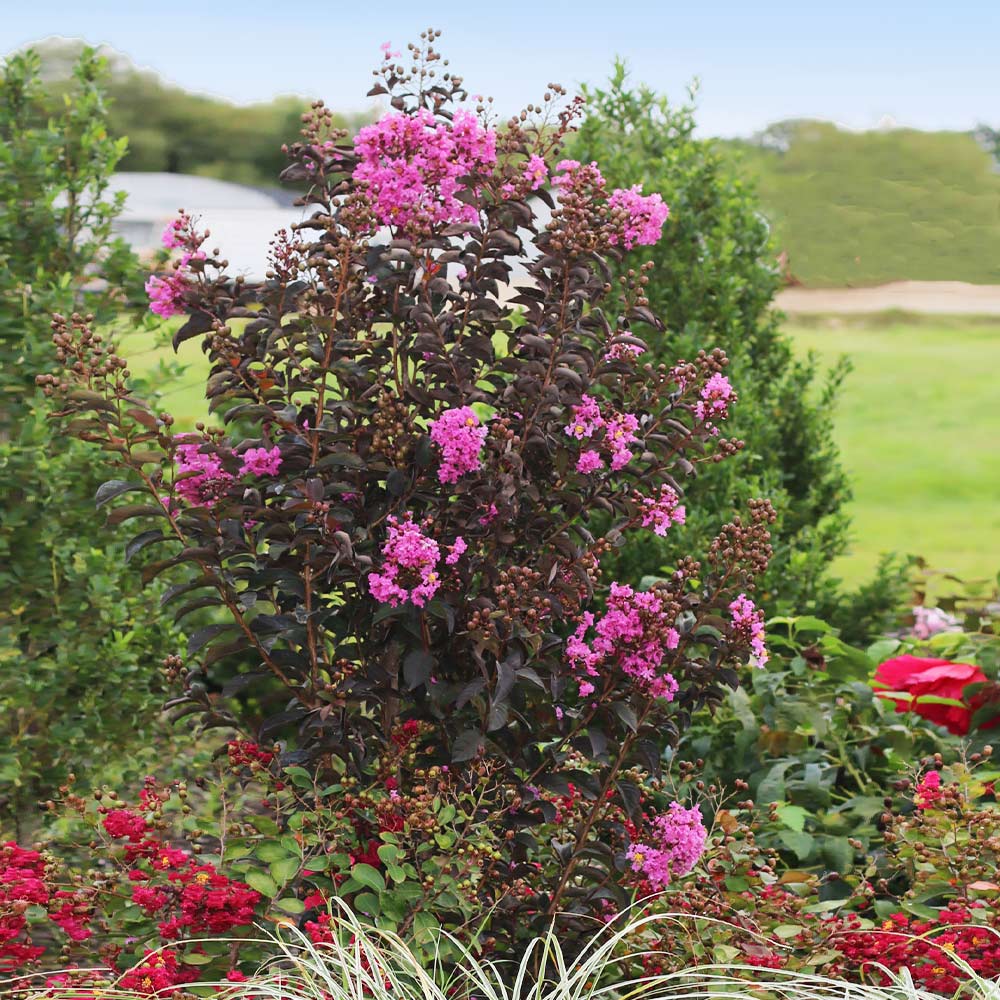
Black Diamond® Crape Myrtle - Purely Purple™
4 reviewsStarting at $129.95
Sioux Crape Myrtle
80 reviewsSold Out
Pink Velour Crape Myrtle
92 reviewsSold Out
Black Diamond® Crape Myrtle - Best Red™
218 reviewsSold Out
Black Diamond® Lavender Lace™ Crape Myrtle Tree
1 reviewsSold Out
Black Diamond® Crape Myrtle - Mystic Magenta™
13 reviewsSold Out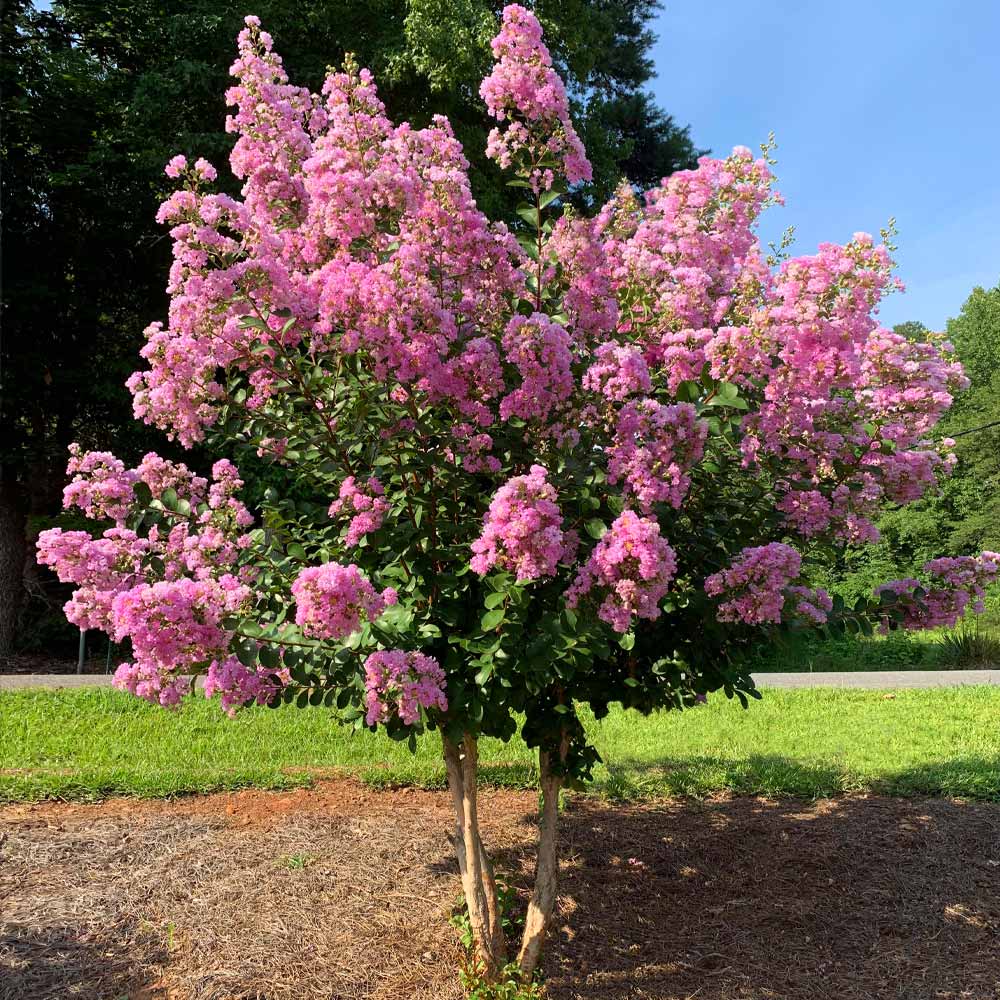
Hopi Crape Myrtle
81 reviewsSold Out
Catawba Crape Myrtle Tree
99 reviewsSold OutMedium Crape Myrtles (5-20’ tall)
Crape myrtle, also known as Lagerstroemia indica, is among America's most cherished and desired plants, especially in the South—and it’s easy to understand why. These lovely trees and shrubs produce vivid, long-lasting blooms in multiple colors and are incredibly simple to care for. A perfect flowering plant might never exist, but crape myrtle comes close!
But there is one pesky (but easily solvable) challenge with crape myrtles: there are so many varieties and types to choose from, that finding the right one for your space can take some effort. To make your decision as easy as—well, growing a crape myrtle—we’ve collected everything you need to know about medium-sized crapes below.
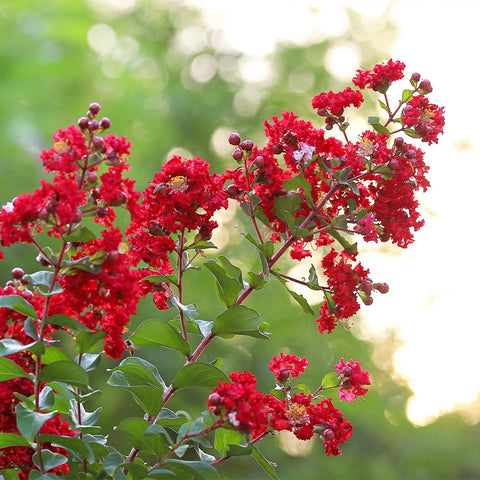
Types of Medium Crape Myrtle by Size
Nurseries don’t typically sell common crape myrtle. Instead, they offer crape myrtle hybrids and cultivators, each with unique characteristics. While the exact number is hard to pin down, there are over 60 types of medium crape myrtle, with more on the way.
Some of the most popular types of medium crape myrtles are:
1. National Arboretum Crape Myrtles: The National Arboretum in Washington, D.C, started cultivating crape myrtles in the early 1960s and bred about 24 new crape myrtle varieties that are widely grown today. The arboretum named the resulting hybrids after Native American Tribes, many of which can be classified as medium-sized trees, including Arapaho Crape Myrtle, Catawba Crape Myrtle, Tuscarora Crape Myrtle, and Sioux Crape Myrtle.
2. Black Diamond: Black Diamonds are a series of about 12 crape myrtles types with striking black foliage and vibrant flowers ranging from fluorescent pink to bright white. Most of the crape myrtles in the series reach about 12 feet in height.
3. Thunderstruck: The Thunderstruck series of crape myrtle are known for dark burgundy foliage, strong branching, and resistance to powdery mildew and Cercospora leaf spot. The lion’s share of crape myrtle in this series grows between 8 and 15 feet tall.
To help you find the right crape myrtle for your garden, we’ve compiled a list of some of our favorite medium varieties and why you’ll love them.
Crape Myrtles 8-10’ tall
1. Pink Velour Crape Myrtle: A fun twist on classic crape myrtle shrubs, Pink Velours produce pink flowers accompanied by deep-wine red leaves in the spring that transition to purplish-green in the summer. An added bonus is that this compact variety is drought-tolerant and highly resistant to powdery mildew.
2. Tonto Crape Myrtle: The perfect tree for big color in a small space, Tonto Crape Myrtles produce rich fuschia-red flowers in the summer. It is more resistant than many other crape myrtle varieties and will be one of the last trees in your home garden to drop its leaves in the fall.
Crape Myrtles 10-15’ tall
Black Diamond Purely Purple Crape Myrtle: Like all crapes in the Black Diamond series, Purely Purple produces a stunning bloom that creates a striking contrast against its black stems. They are ideal for patios, porches, balconies, and small gardens.
Crape Myrtles 12-15’ tall
Thunderstruck Coral Boom Crape Myrtle: Living up to its name, this crape produces bright coral flowers against intense glossy black foliage. It’s drought-tolerant, cold-hardy, and perfect for plant lovers who want effortless beauty in their garden.
Crape Myrtles 13-20’ tall
Sioux Crape Myrtle: Cold hardy, Sioux Crape Myrtle can flourish farther north than most crape varieties, even under layers of ice and snow. This beautiful plant produces dark pink flowers that continuously bloom from summer to fall.
Crape Myrtles 15-20’ tall
1. Colorama Scarlet Crape Myrtle: Colorama becomes the focal point of every space it grows in. This crape favorite produces rich scarlet-red blooms that contrast against deep green foliage. It grows upright with dense branching.
2. Tuscarora Crape Myrtle: This medium tall myrtle variety produces coral-pink flowers and can thrive in trouble spots and barren areas. There are two versions of this classic crape, one with an elegant single truck and another with a lush multi-stem.
Want to know even more about crape myrtles? Check out our complete guide to the plant. You’ll learn how to care for crape myrtles and see small and large varieties to consider.
Benefits of Medium Crape Myrtles
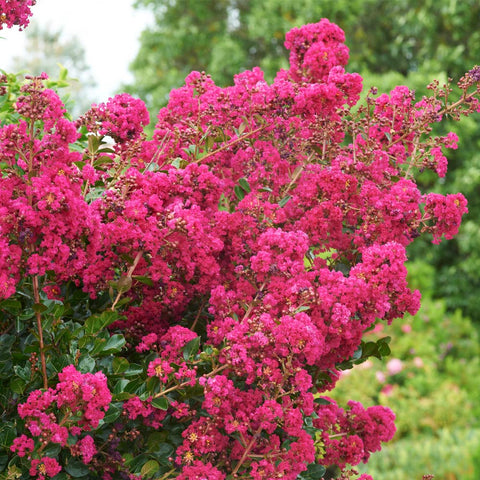
Year-round interest: Crape Myrtles have something for every season. They deliver beautiful, long-lasting summer flowers, stunning fall colors, and breathtaking winter bark.
Versatility: Crape myrtles come in all sizes and forms and can fit into every home garden. Their uses are only limited by your imagination.
Ease of care: As long as you give crape myrtle plenty of sun and water, they are a breeze to care for. You might not even need to prune, depending on the variety you choose. Also, several crape varieties are drought tolerant, so you won’t have to lug your hose out every few days to water them.
Coldy hardy: New hybrids and cultivators of crape myrtle are reliably cold-hardy. Many crapes’ “comfort zone” is between USDA zones 6 and 9.
Common Questions About Crape Myrtles
How fast do crape myrtles grow?
Most crape myrtles boast a fast rate of growth, meaning they can grow up to two feet in a year!
How big do crape myrtles get?
Crape myrtles range in size from 12-25 feet depending on your variety and growing conditions. Learn more about crape myrtles of different sizes above.
Is topping good for a crape myrtle?
Topping crape myrtles tends to cause more harm than good and can cause dead wood to develop. Be sure to reference your specific crape myrtle’s care directions for pruning best practices.
Do crape myrtles have shallow roots?
Crape myrtles do grow shallow roots, so you’ll want to ensure your planting location is sunny and contains well-draining soil.
More Crape Myrtle Resources
Pruning Crape Myrtles: How to Keep Your Crape Healthy